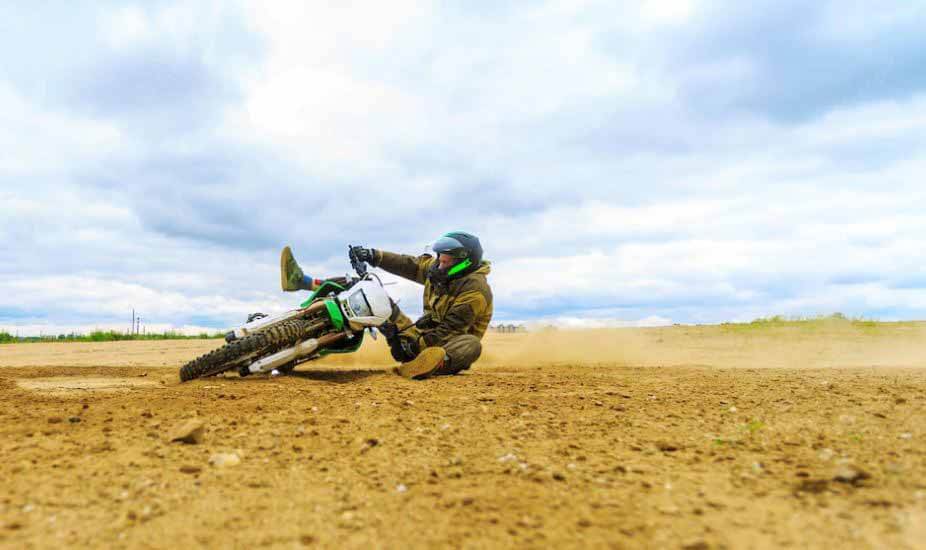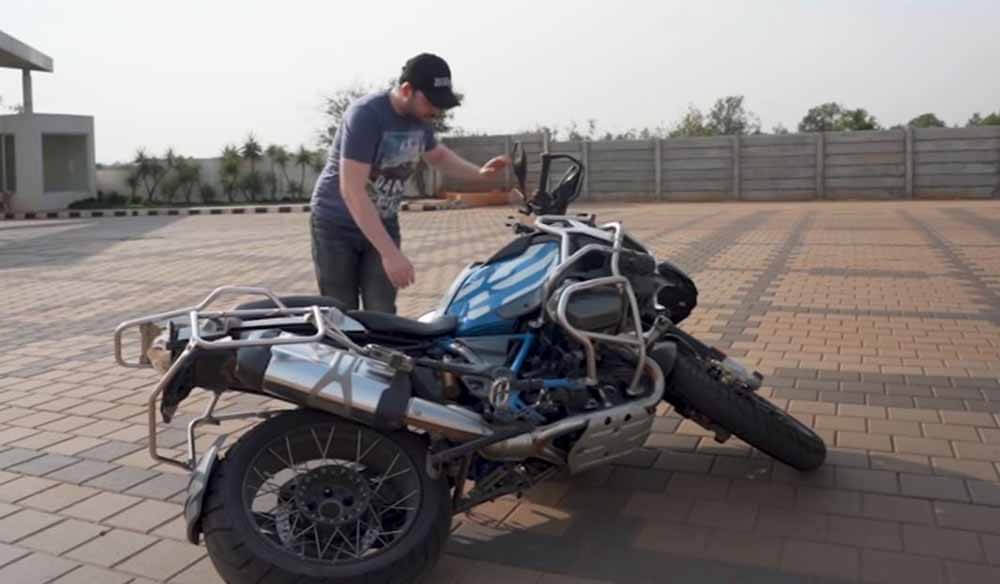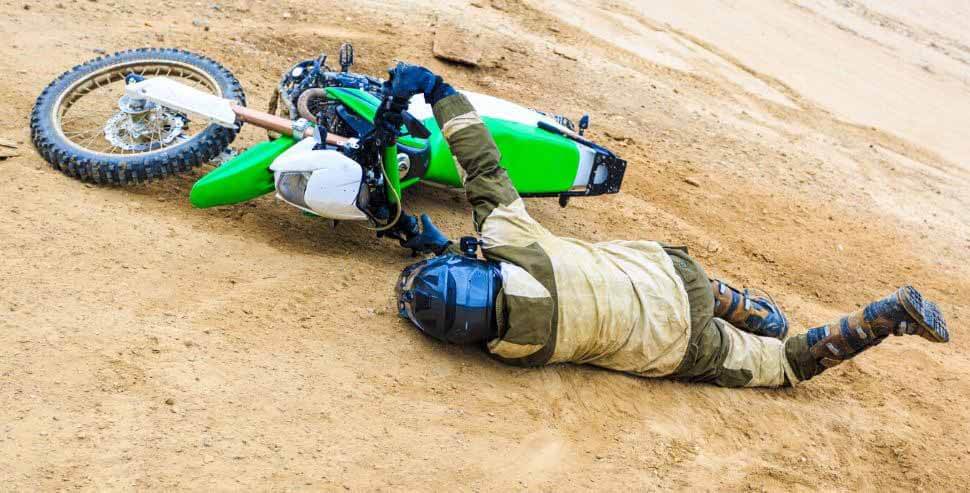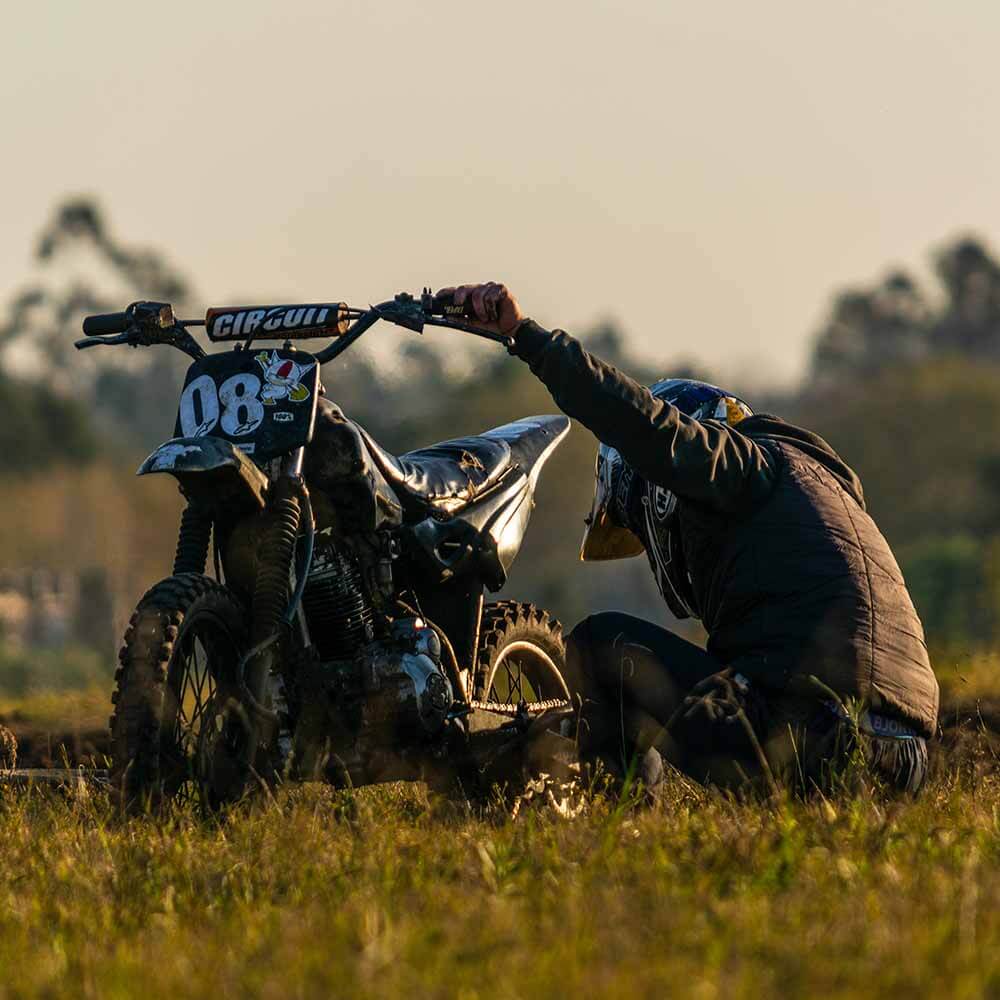Dropping your motorcycle happens to every rider at least once, and while it can be embarrassing, it’s important to realize that a dropped motorcycle can cause damage to your bike. Before you get back on the bike, there are a few things that you should check out to ensure you’re going to be safe when you roll out again.
5 of The Most Common Ways to Do with a Dropped Motorcycle
There is a number of ways to deal with a dropped motorcycle, but most can be avoided with a little thought. Understanding the ways, a bike can be dropped is key to avoiding these situations in the future. Five of the most common ways to drop a motorcycle are:
1. Ride a Bike That You Can’t Handle
This usually occurs when people right a bike that’s too large or heavy for them and for which they don’t have the necessary skills to ride the bike successfully. Typically, the bike gets dropped in a parking lot or when riding slowly. When you are starting out, it’s essential that you choose a bike that fits your size. As skills improve, upgrading to a bigger bike becomes an option, but take the time to learn the necessary skills to be able to control the bike before you make the upgrade.
2. Slow Riding
Very slow riding can often lead to a dropped motorcycle. In situations where you have to ride slowly, you are way more likely to drop your bike. It’s the momentum from the speed that keeps a motorcycle upright, so slowing too much can cause a case of wobbles, as the lower speed makes it difficult to maintain your balance on the bike.
3. Turned Handlebars When Stopping
It’s important that when you stop your handlebars are square. When the handlebars are turned, it changes the balance and stability of the bike and can cause it to topple over, and then you have a dropped motorcycle… Unfortunately, that’s the nature of a two-wheeled machine.
4. Forget to Put the Stand Down
Every motorcyclist has done it at least once, either forgetting to put the stand down or not putting it down properly. The result is the minute you start to dismount the bike it keels over. It’s more than a tad embarrassing for the rider, especially if it occurs in front of a crowd.
5. The Unstable or Slippery Surface
Rounding out the five is stopping on an unstable or slippery surface. This can cause either the bike stands to slip or not engage properly, or it can result in the rider not getting a stable foothold leading to a fall. Parking on a hill can have a similar effect.
What To Do When You Dropped Your Motorcycle?
When you drop your bike, your first reaction is usually one of embarrassment. Then follows that awful, “oh no, is my bike, ok?” Firstly, don’t let the embarrassment get to you, every rider does it at least once and although the experienced riders might suggest otherwise, it’s not just beginners who drop their bikes. If you drop your bike, these are a few things you should do:
Take Photos
After you’ve picked yourself up and dusted off, the first thing you want to do is check out the bike and where it’s lying on the ground. It’s important to note the areas of the bike that have hit the pavement so that you can check them out properly for damage. The easiest way to do this is to take pictures.
It can be hard taking it all in, during the heat of the moment. A picture is a great way of ensuring that you don’t forget anything. It’s important to take the pictures immediately and as quickly as possible, in case your gas is leaking or you’re impeding traffic.
Stand The Bike Up and Position Away from Danger
As soon as possible, you want to stand your bike up. Many bikes leak gas when they are on their sides, so it’s important to act quickly to stop this. Most of the time with the right technique it’s not that difficult to get your bike up. Use your legs when you lift the bike and stand with your back to the bike. Get a good grip on the bike and try to keep your back straight. It’s a good idea to lift it in gear to stop it rolling once you get it up.
Once you have stood the bike up, be sure to position it out of danger, so that you can give it the once over. If you can’t get your bike up by yourself, make sure you ask for help. Sometimes it happens that you just can’t manage it on your own.
Check For Damage
Next, you want to quickly check for damage to the dropped motorcycle. If it was on its stand when it fell then there’s a good chance it has been damaged, especially if the bike was pushed over by a car or you didn’t engage the stand properly. Check the clutch and shifter aren’t bent or broken as they are on the same side.
If the bike falls on the other side, then you have the accelerator and brake to consider. A worst-case scenario is the brake peg has hit the engine case and cracked or damaged it. If your engine case has been damaged, don’t risk it, get a tow. The bike may have internal engine damage or have lost oil.
Your bike’s aesthetic look is likely to take a hit, with scratches or paint damage. Remember, to check your handlebars for damage before riding them. Also, check to see if there has been damage to the indicators or lights. Mirrors may be broken or damaged.
The foot pegs should also be checked for damage, including cracks or bends. The cracks especially are not always immediately evident and can be very fine, but that will impact the overall structural integrity.
Make Sure It Rolls
Once you’ve given the bike the once over, make sure it rolls all right. If it doesn’t, you’re going to need to get a tow truck. Give the bike another quick check to ensure nothing is going to fall off and that the lighting is working.
If everything is in order, you’re good to go. Usually, a dropped motorcycle just causes cosmetic damage, and the bike is mechanical fine.
Protecting Your Bike
There are products out there that act in the same way your riding gear does for you, but for the bike. Crash bars and hand guards help protect levers and your hands. These types of items aim to keep your bike functioning and looking good in the event of a dropped motorcycle.
Information for this article was partially sourced and researched from the following authoritative Government, educational, corporate, and nonprofit organizations:
FM/A




